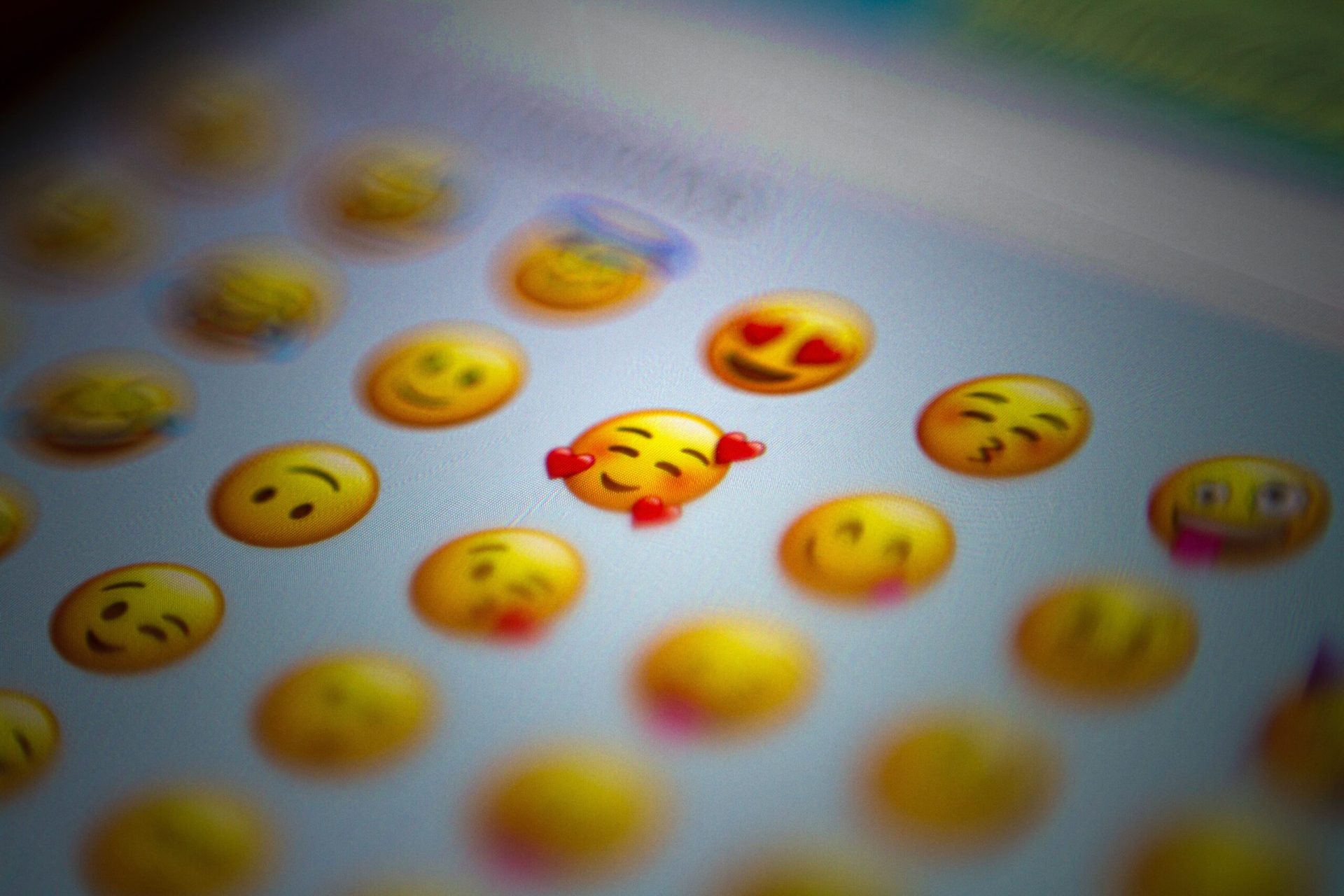Everyone uses emojis on a daily basis, but few truly know the origins and meanings of each one.
Where do emojis come from? When is it appropriate to use them in communication?
emoji: The History
Emojis are small images made up of just a few pixels that represent moments from daily life.
They became popular in Japan in the late 1990s and have since spread all over the world.
In addition to emojis, emoticons are also commonly used in chats and SMS, but it’s important to differentiate between the two terms, as they are not synonyms as people often think, but indicate two different ways of communicating.
The emojis we all know actually come from emoticons created by Scott Falham in 1982. The computer scientist introduced a system for interpreting communications at the university by inserting : – ) for humorous communications and : – ( for serious ones.
So when we talk about emoticons, we are referring to keyboard symbols that make up expressions and moods, such as a smile composed of a colon and a closed parenthesis : ).
Messaggio di Scott Falham – Fonte: Twitter
The word emoji derives from the Japanese words 絵 , meaning “picture,” 文 (mo) meaning “writing,” and 字 (ji) meaning “character.” Emojis are symbols and images that represent objects, expressions, animals, feelings, and everything that surrounds us. They were invented in 1998 by an employee named Shigetaka Kurita, of the Japanese telecommunications company NTT DoCoMo. The idea originated from a Japanese observation; people tended to exchange a large number of images via SMS, which also highlighted a certain difficulty in expressing emotions in words by the Japanese population. That’s why emojis were created.
From the creative idea, major companies such as Panasonic and Sharp were approached to design the emojis, but they refused to collaborate because they did not believe it could be a valuable idea. It was the employee who created the first set of 176 emojis, which are now housed at the Museum of Modern Art (MoMA) in New York.

Fonte: MoMa
In 2005, an agreement between telecommunications companies led to the standardization of the emoji map to allow for proper display across different types of devices and, over time, even cross-platform. It was in this year that the number of emojis reached 800.
In 2007, when the first iPhone was launched, Apple noticed the widespread use of emojis and integrated them into the operating system from the beginning, but only in the Japanese models. In the American models, the emoji keyboard was hidden and only visible through the installation of an app. Apple officially made emojis available in 2011, while Android did so in 2013.
Among the most iconic and widely used emojis are the smileys, simple yellow faces that represent emotions, but also numerous emojis related to Japan, the country of origin, particularly those related to Japanese food and culture, such as:
- ???? Sushi
- ???? Ramen
- ???? Onigiri (rise ball)
- ⛩️ Torii (ed gate at the entrance to temples)
- ???? Monte Fuji
- ???? Bambole giapponesi (ornamental dolls that celebrate the good health and prosperity of girls in Japan)
- ???? Tengu (a monster that represents anger and evil)
In 2015, the ???? emoji was named Word of the Year by the Oxford Dictionary. Even though it may sound strange, emojis have become a proper language, embodying concepts and emotions that we often struggle to convey.
Using Emoji
Over time, the use of simple emoticons has evolved into the use of emojis. Not only have they undergone graphic changes in recent years, but an infinite amount of objects and expressions have been introduced to allow for even more specific and detailed communication. For example, in 2012, emojis depicting same-sex couples were added, while three years later, multicultural emojis were introduced.
GIFs
Communication has undergone various transformations, as have the tools and methods for communicating. GIFs – animations that allow for even more explicit expression of any kind of emotion or expression, were born without leaving any doubts. The positive side of this new introduction is that emojis could often be misunderstood and interpreted in endless ways. With the sending of animated GIFs, there is certainty that the recipient of the message will have a clear understanding of the sender’s mood. Often these animations are derived from fantasy situations, cartoons, memes, or scenes from movies, TV shows, or television programs.
How to use emoji in your messages
Emojis are very useful in communications and messages that we want to send. However, it is important to keep in mind that it is important not to abuse their use, as the message would become less smooth, confusing, and less serious.
Emojis can help, used in the right contexts and in an appropriate manner, to express a concept or to make it concrete: an emotion, a place, or simply a more precise description of an object or mood. In some cases, emojis can be included within messages, such as with SMS, to reinforce the expressed concept, while in others, we can insert them within emails, both in the body of the communication to add color to blocks of text and concretize the content, and in the subject. Inserting an emoji in the subject can intrigue the reader, but also attract more attention to an email. It is important to differentiate oneself from a myriad of messages that invade the mailbox every day, and emojis can be a good solution.
Therefore, emojis are not so obvious; they are a language and a real support tool for the message we want to send, allowing us to make the message clear and understand our emotions.







